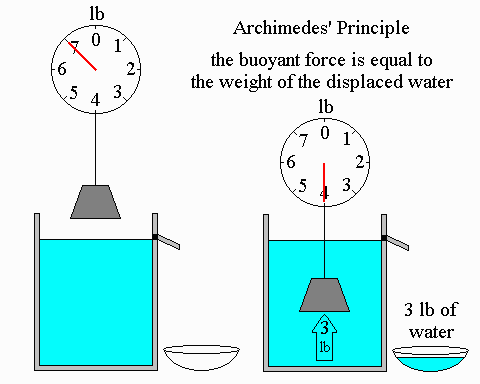You have no items in your shopping cart.
Laws of Physics
Matter is generally considered to be anything that has mass and volume.
Archimedes Principle

Archimedes Principle
Newton’s Laws
Newton’s First law
In an inertial frame of reference, an object either remains at rest or continues to move at a constant velocity, unless acted upon by a force.
Newton’s Second law
In an inertial frame of reference, the vector sum of the forces F on an object is equal to the mass m of that object multiplied by the acceleration a of the object: F = ma. (It is assumed here that the mass m is constant – see below.)
Newton’s Third law
When one body exerts a force on a second body, the second body simultaneously exerts a force equal in magnitude and opposite in direction on the first body.

Newton's Laws Summary
Ohm's law
Ohm's law states that the current through a conductor between two points is directly proportional to the voltage across the two points. Introducing the constant of proportionality, the resistance, one arrives at the usual mathematical equation that describes this relationship.

Ohm's Law
Stefan's Law
Stefan-Boltzmann law, statement that the total radiant heat power emitted from a surface is proportional to the fourth power of its absolute temperature. Formulated in 1879 by Austrian physicist Josef Stefan as a result of his experimental studies, the same law was derived in 1884 by Austrian physicist Ludwig Boltzmann from thermodynamic considerations: if E is the radiant heat energy emitted from a unit area in one second (that is, the power from a unit area) and T is the absolute temperature (in kelvins), then E = σT4, the Greek letter sigma (σ) representing the constant of proportionality, called the Stefan-Boltzmann constant. This constant has the value 5.670374419 × 10−8 watt per metre2 per K4. The law applies only to blackbodies, theoretical surfaces that absorb all incident heat radiation.











